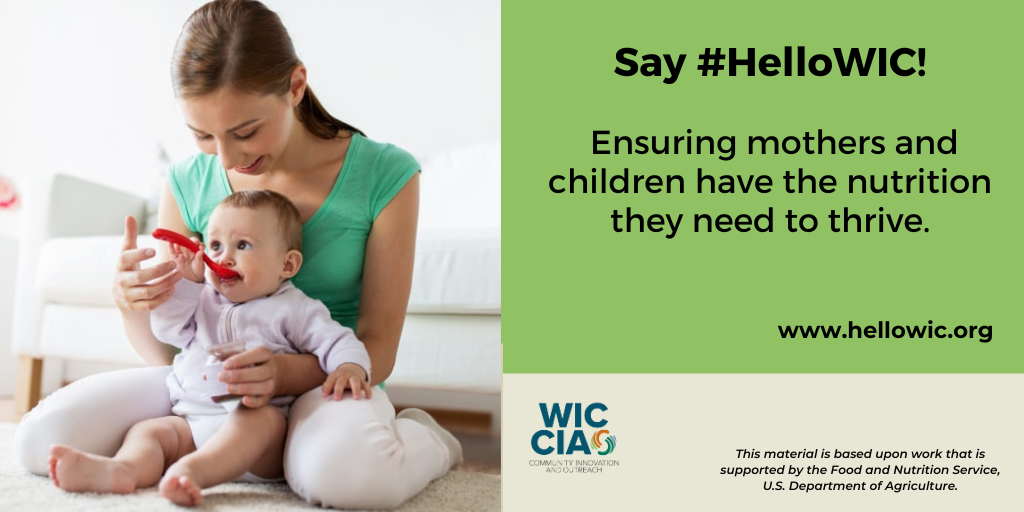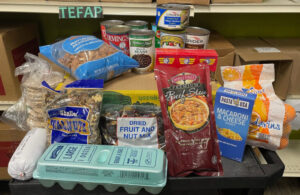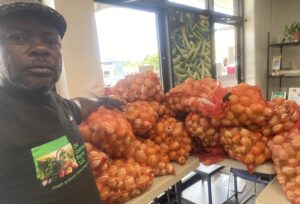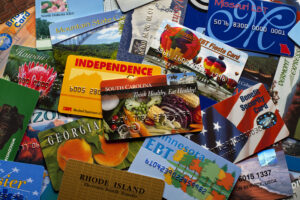In 2020, roughly six million women, infants, and children eligible for WIC were not participating in the program. Now, the WIC Community Innovation and Outreach Project (WIC CIAO) is looking for innovative ways to say “hello” to new participants.
Funded by a $44 million USDA grant to the Food Research & Action Center, the WIC CIAO project team has identified 36 sub-grantees, including two food banks, that will promote outreach strategies to increase WIC enrollment and retention, particularly in underserved communities.
WIC CIAO, which also includes UnidosUS, Native American Agriculture Fund, and Gretchen Swanson Center for Nutrition, views food banks as playing a potentially large role in closing the WIC gap, particularly within underserved communities. “People turn to them when they need help. They trust them,” noted Geri Henchy, FRAC’s Director of Nutrition Policy and Early Childhood Programs.
Community Food Bank of Grand Junction, serving Mesa County, Colo., has been funded $208,850 for an 18-month project that includes the creation of “rolling WIC consultant” positions. The consultants, comprised of current WIC participants, come together in focus groups to advise on the project’s outreach activities.
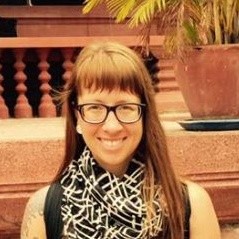
“It’s so incredible, the insightfulness and the value that we get out of that,” said Alisha Wenger, Executive Director. “Not only in helping us design these programs, but also in that relationship building and trust building. And empowering them.”
There are two to three focus groups, each comprised of three to five current WIC parents, who meet biweekly. Participants prefer the small groups, which also allow the food bank to provide on-site childcare during sessions, which is critical to their participation, said Wenger. Participants receive $100 in grocery gift cards for each 1.5 to two-hour session.
Feedback from the consultants has helped the food bank identify events and venues where outreach is effective (or not). Their input has also helped the food bank plan food demos and recipes to boost retention during the toddler years, when WIC benefits change, creating a risk of drop-off.
They’ve also highlighted real-world potential barriers, such as WIC’s heavy reliance on an app when some parents can’t afford a smartphone with enough functionality to access it. “They are the true experts about WIC in our community and potential program barriers to participation and retention,” Wenger emphasized.
While the focus group members are “busy moms struggling to make ends meet,” Wenger said, “they are very engaged and interested in helping move the work forward by supporting our team.” She plans to consult them throughout the project, perhaps adding new participants who join WIC as a result of the food bank’s outreach activities.
Hunger Task Force, an independent food bank based in Milwaukee, Wis., will likewise be consulting current WIC participants for a project that includes a social media campaign, an incentive program for referrals from pantries, and the collection of data to highlight best practices, said Executive Director Sherrie Tussler. It was granted $220,760 for the 18-month project, which is focused on rural, Tribal and communities of color.

The food bank’s two-phase social media campaign is intended to expand upon WIC outreach traditionally done by state agencies, which “may not be as nimble or able to use as much existing social media as we might be able to, or as quickly as we can,” Tussler said.
The social media campaign will use display and mobile ads, Facebook and Instagram ads, and YouTube videos, “in addition to other media outlets we learn about from focus groups and outreach,” Tussler said. Phase one will test messaging with focus groups and review online engagement, while phase two will leverage the methods shown to have the greatest impact.
Hunger Task Force also plans to pay food pantries $25 for each conversation with a WIC-eligible individual who then enrolls in WIC. Tussler hopes that the pantry incentive payments will encourage pantry coordinators “to think about themselves in context and alleviate the burden of constant demand by having people apply for and receive benefits that they’re entitled to from the federal government.”
Both food banks also plan to expand existing programs, such as having navigators who assist with SNAP applications also help with WIC enrollment. The Community Food Bank also plans to expand its partnerships with community organizations working with young children, while the Hunger Task Force recently hired a WIC Outreach Manager.
When it comes to defining success for their respective projects, both food banks emphasize moving the needle on WIC enrollment and participation. “It’ll be interesting to see where, how, and why,” Tussler said. “And then, once you can move the needle, it should be replicable to move that needle in other spaces, if they follow the where, the how, and the why.”
Wenger, who sees similarities between the challenges Mesa County faces and those in many other communities, echoed that sentiment. “I would love to see how we could be the prototype that could be translated to other kinds of rural-urban centers throughout the country,” she said. – Amanda Jaffe
Amanda Jaffe is a writer and former attorney with a deep interest in organizations and mechanisms that address food insecurity. In addition to Food Bank News, her essays and articles have been published in a number of print and online magazines and journals. Her writing may be found at www.amandajaffewrites.com.
Like what you’re reading?
Support Food Bank News
